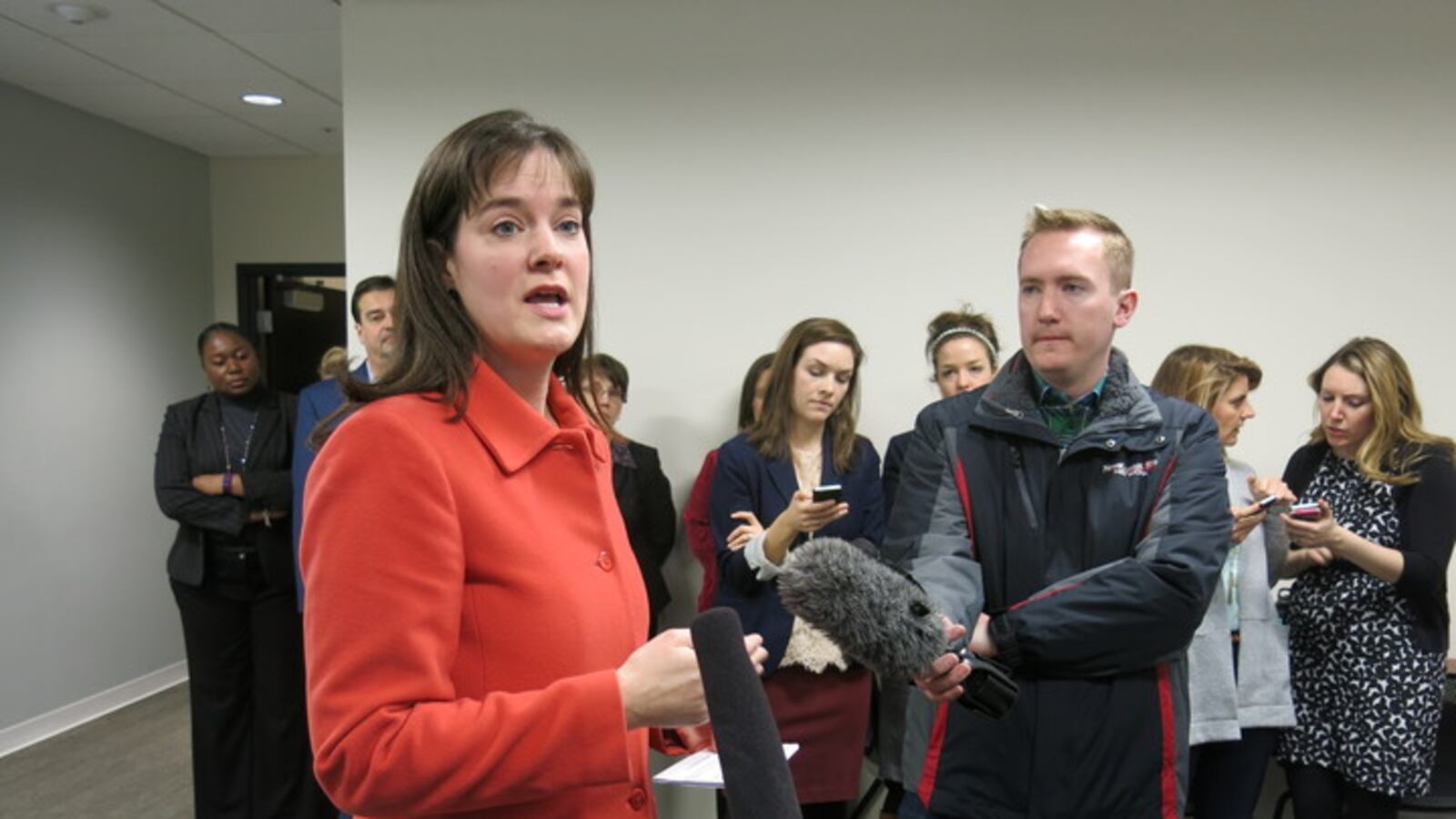After months of planning and angst, the Denver school board voted tonight to approve a shared enrollment zone for middle school students in northwest Denver.
Denver Public Schools has been introducing shared zones — where students aren’t automatically assigned to a single school, but are guaranteed a spot at one of a number of schools. — in neighborhoods across the city in what officials say is an effort to foster integration and promote school choice.
Superintendent Tom Boasberg said the new approach to school assignments will “promote opportunity and equity within northwest Denver…and promote integration and equity in our school district, which are foundational principles of our democracy.
“The narrower you draw your boundaries, the more likely you are to see schools that are less diverse,” Boasberg said. “The broader you draw the zone, the more likely you are to draw greater diversity.”
Those issues have been pressing in northwest Denver, which includes middle-class neighborhoods and rapidly-gentrifying areas, as well as the largest housing project for lower-income families in the state, Quigg Newton.
The board had voted to close the middle school at Trevista@Horace Mann, a pre-K-8 school near the Quigg Newton project, earlier this spring, citing low enrollment and difficulties adequately staffing the school to serve English language learners. That required the district to redraw middle school boundaries in the region.
The new enrollment zone in northwest Denver will include STRIVE, Skinner Middle School, Denver Montessori Jr/Sr High School, and Bryant-Webster. Trevista will remain open as a K-5 school.
Boasberg commended the principals at each of the schools involved in the zone. “We have a common set of values, equity and integration,” he said. “They put aside the fact that some are district, some are charter.”
Board member Arturo Jimenez, who represents northwest Denver, was the sole vote against the plan. Jimenez raised concerns about whether the zone would genuinely foster integration, whether choices would be accessible to the neighborhoods neediest students, and about transportation plans for families in the region.
Check Chalkbeat’s board tracker to see how the board voted on each of the items at tonight’s meeting.
Some residents of northwest Denver had raised concerns about the fact that each of the schools except Skinner has a specialized focus. Some with children at Skinner were concerned that the school would become overcrowded. Others were concerned that the proposals would automatically assign students to STRIVE, a charter school. Still others were concerned that some of those avoiding STRIVE were biased or misinformed about the charter school’s model.
Dozens of families and employees at the affected schools appeared at a board public comment session last week to share their thoughts on the plan.
The new zone gives preferences to students with certain backgrounds at certain schools: Students who already attend Skinner will be given preference at that school. Students with Montessori backgrounds will be given preference at the Montessori school. And students who have been attending dual language elementary schools will be given preference at Bryant-Webster.
Board members said the district plans to provide for transportation and will evaluate how transportation options are working and how enrollment patterns are playing out each year.
“It’s a dynamic, changing neighborhood,” said board member Mike Johnson.
“The legal environment makes it so challenging to do the things we’d hope to do to create equity,” said board president Happy Haynes. “The district’s been very creative in finding ways, through choice and through shared enrollment zones, to address equity issues.”
The district also voted tonight to approve a three-year placement of Denver Montessori Jr./Sr. High School at the Smedley building in northwest Denver.
The board rejected an amendment proposed by Jimenez that would require the district to create a new, district-run middle school in northwest Denver before moving any other new or existing program into the region. Board members said they were not sure how that amendment would align with a new policy that dictates how schools are placed in buildings.

